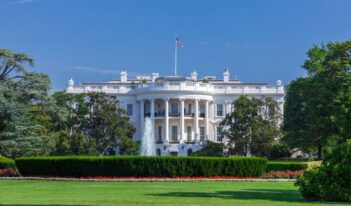
Study finds class action lawsuits to be no more frequent in states with appointed versus elected insurance regulators
Many economists consider regulation and litigation to be substitute strategies for achieving public policy objectives. Governments can choose to regulate to prevent harms prospectively or they can allow injured persons the opportunity to sue for damages afterwards, with the threat of such costly litigation serving as a preventative deterrent force. As a result when states regulate more, they need litigation less – and vice versa.
Although thinking of litigation and regulation as substitutes might have a strong foundation in both intuition and economic theory, the reality appears to be otherwise, according to economists Eric Helland of the RAND Corporation and Jonathan Klick of the University of Pennsylvania Law School. In studies of insurance regulation, they find that regulation and litigation move in lockstep with each other rather than in opposite directions. At least when it comes to insurance issues, states that have more regulation also experience more litigation.
In their recent chapter in the book Regulatory Breakdown, Helland and Klick consider one possible explanation for why regulation and litigation are not substitutes. Specifically they examine whether high levels of litigation might co-exist with high levels of regulation because litigation serves as a check on regulatory capture or other abuses by regulatory authorities. Drawing on their analysis of an extensive dataset on insurance class action litigation, they find that those states which are least likely to have captured regulatory agencies – because they have elected rather than appointed insurance commissioners — actually have more litigation.
Helland and Klick also find, intriguingly, that states that have elected judges also see a greater number of class action lawsuits. They surmise that in such states plaintiffs lawyers may well think that elected judges will be more favorably inclined to their clients’ plights.
Beyond reporting simple correlations, Helland and Klick also report findings from an extensive multivariate regression analysis that seeks to identify factors that correspond with levels of class action litigation. One factor seems to be the size of a state’s population, for the larger the state the larger the potential class size.
But in terms of regulation, there appears to be no discernible structural features that correspond with litigation. As with their simple correlations, the existence of appointed regulators in a state appears no more likely to generate litigation than the existence of elected regulators.
Rather, the nature of the plaintiffs’ claim seems to matter. Plaintiffs lawyers appear, understandably, to look to places where similar claims have previously succeeded.
The only statistically significant findings related to regulation turn out to be modest effects. When regulators report in a survey that they have an interest in a type of allegation, this is associated with a very slight decrease in class action litigation on that type of claim. And when regulators file briefs in class action litigation – most of the time, on behalf of defendants – this is associated with a slight reduction in the likelihood of class action filings.
Although Helland and Klick acknowledge the need for further research to discover more fully what explains why litigation and regulation are not substitutes, they conclude that the explanation must lie in something other than the use of litigation to combat the potential for regulatory capture by appointed regulators.
They suggest that rather than working in a coordinated fashion – whether as substitutes or complements – government regulation and the class action litigation system may be running entirely on separate tracks. This apparent bifurcated nature of two systems affecting incentives for socially-desirable behavior only makes more complicated, Helland and Klick conclude, the search for policy prescriptions on how to create a more optimal balance between society’s reliance on regulation and litigation to achieve policy goals.
Helland and Klick’s paper appears as a chapter in the recently published book, Regulatory Breakdown: The Crisis of Confidence in U.S. Regulation, edited by Cary Coglianese and published by the University of Pennsylvania Press.
This post is part of The Regulatory Review’s three-week series, Regulatory Breakdown in the United States.



